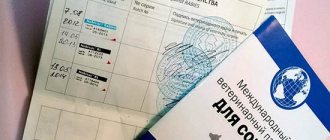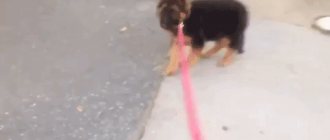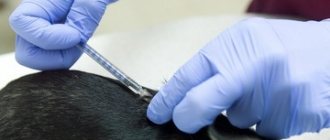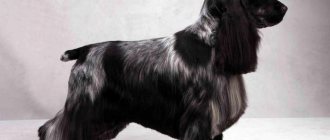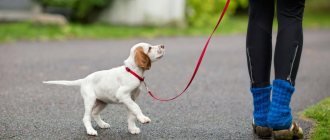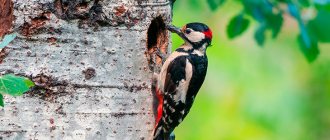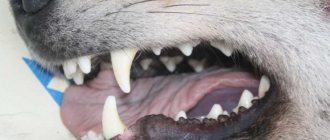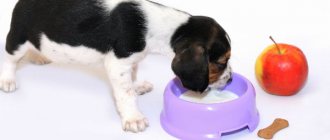If you've just adopted a puppy into your home, you might want to immediately take him out for a walk, show him around and let him play with other dogs, but this is dangerous because without the protection of vaccines, he could get sick.
In other cases, there are owners who are extremely careful to keep the puppy at home, taking him out into the world until the vaccination period is over, and this is also not entirely positive, since it harms the socialization of the animal. So, the question that inevitably comes to our minds is: “Is it possible to walk a puppy without vaccinations?” In this article we will give you some tips.
The importance of walking for animals
Before you figure out at what age to walk your puppy, you need to note the importance of walks. Thanks to them we can:
- Accustom your pet to communicate with other people and animals. Timely socialization suppresses aggression and cowardice.
- Maintain or improve your physical fitness. Regular going outside keeps not only pets, but also their owners in good shape.
- Stabilize mental state. The lack of new emotions affects obedience and exacerbates feelings of loneliness. A dog with a walk can tolerate separation much easier and is much less likely to suffer from destructive behavior.
- Stimulate the body's functioning. Fresh air saturates the brain with oxygen, improving the functioning of the cardiovascular system and all internal organs.
Please note that walking should be supplemented with training and games. This facilitates the educational process and strengthens attachment.
When to walk your adult dog after vaccination?
Adult dogs who are already one year old are vaccinated annually, and with a whole complex. A separate injection is often added to the injection, which contributes to the formation of resistance to rabies.
There is no clear schedule for vaccinating male dogs. For females, the vaccination period is selected depending on estrus and mating. In this case, it begins one month before mating begins.
A vaccinated dog, when mated, is subsequently able to give birth to healthy offspring. At birth, puppies receive strong immunity for up to 3 months without vaccinations.
After vaccination, adult dogs should be walked separately from other animals.
It is not prohibited to go for a walk with an adult dog. However, towards the end of the year of life, immunity weakens. Therefore, before and after vaccination, an adult dog should be taken out separately from other dogs for 2 weeks, without allowing heavy loads. To protect your pet, it is better to extend the quarantine period to 3 weeks, as there is a risk of contracting rabies. Plague also poses a threat.
If it’s winter outside, you shouldn’t give your pet a full bath after a walk. It is enough to wash only the paws. If there is a need to clean the fur, it is best to do this with dry shampoo.
At the end of quarantine, the dog is gradually returned to its usual rhythm of life. They remove the ban on swimming in reservoirs, especially if this happens in the summer, and communicating with other dogs. In summer, the dog is shown frequent withdrawal.
Important! The formation of swelling at the injection site is not a pathology and does not require consultation with a veterinarian.
At what age can you walk a puppy?
Many new owners who have no experience with a dog do not know when to walk their puppy. Based on the benefits of walking, some of them naively believe that the first time outside is allowed soon after birth. But in fact, getting to know the outside world too early is very dangerous.
Before vaccinations, the baby is maximally vulnerable to pathogenic microorganisms. It is protected only by rare antibodies inherited from the mother through colostrum. As they grow older, their number constantly decreases, so at 2-2.5 months all pets receive their first vaccination against the most common and dangerous infections.
Quarantine lasts 2-8 weeks, which means that the first exit will take place at 3-4 months of age.
What else do you need to know about vaccinations?
Today there are a large number of vaccines on the market that are used to protect pets from diseases. Many believe that imported products, due to their higher cost, have better properties, and the quarantine period after vaccination can be shortened with them. However, this rule remains unchanged; foreign manufacturers also recommend refraining from walking outside for 10–14 days.
The main difference between vaccines is their acceptance in different countries. If you are planning to travel to other countries, it is better to use imported vaccines. You can read more about vaccines here.
There are different types of vaccines. Today there are attenuated and inactivated vaccines. The difference between them is that after the first type of drugs is administered, a small number of viral organisms appear in the dog’s blood, which are able to actively reproduce. But due to their small initial quantity, the animal, although it gets sick, suffers a mild form of the disease, and immunity remains for a long time.
Vaccines of the second type contain a large number of viral microorganisms, but their ability to reproduce is suppressed, which allows the dog’s body to produce antibodies and form immunity to the disease. And although the principles of action of the drugs are different, the recommended quarantine period remains unchanged.
The importance of quarantine after vaccinations
It takes time to develop antibodies, so immediately after vaccination the pet is not yet ready to encounter viruses and bacteria. Before being introduced to the outside world, he is vaccinated against distemper, enteritis, parainfluenza, leptospirosis, infectious hepatitis and rabies.
In addition to the main vaccination, repeated or revaccination is carried out. It is necessary for the formation of the maximum possible number of antibodies. The second vaccination is given 21-28 days after the first. After this, the doctor explains when you can start walking the puppy.
In most cases, quarantine is exactly 2 weeks. During this period it is necessary:
- Limit contact with other animals, outdoor clothing and shoes.
- Avoid water procedures.
- Reduce physical activity.
- Avoid changing your diet.
Slight lethargy and fever in the first 3 days after vaccination are absolutely normal. The help of a veterinarian will be required only for breathing problems, seizures, frequent vomiting and blue mucous membranes.
Imported or domestic vaccines?
After which vaccination can you take your puppy for walks first - after imported or domestic? There is absolutely no difference here! When choosing a vaccine from any manufacturer, you must prepare the dog (we’ll tell you how to do this later) and withstand quarantine.
Imported vaccines are more expensive than domestic ones, and many therefore believe that their quality is higher and choose them. But veterinarians insistently recommend that puppies be vaccinated against distemper only with a Russian-made vaccine, since after imported vaccinations there have been cases of infection with this disease, even though the owners vaccinated the dogs following all the rules.
In any case, the veterinarian will advise you on everything himself and tell you about the advantages and disadvantages of any vaccine produced.
First walk
Before taking your puppy for the first time outside, you need to take care of equipment and training. Memorizing basic commands can be done right at home, since they do not require much space to perform them.
Preparation
During quarantine, start purchasing the necessary things and raising your little four-legged animal. To do this you will need:
- Buy a collar (or harness), a leash and warm clothes. Choose high-quality materials that do not cause allergies. In winter, dog boots are useful to protect paws from exposure to reagents.
- Accustom your pet to the purchased ammunition. The leash and collar should not cause fear. Try to reinforce the positive association through food reinforcement or games.
- Teach your baby the commands “Fu”, “Come to me”, “Next” and “Sit”. With their help, you can prevent picking up from the ground and attacking passers-by, as well as adjust your step and direction of movement.
Conduct the lesson in a playful way so that the four-legged dog does not get bored. The best reinforcement at this age is tasty treats, so don't skimp on treats.
When can you take your puppy outside?
It is better to take a walk before eating or at least half an hour after feeding. Otherwise, your pet will be very lethargic and will not be able to concentrate.
During the daytime, go outside immediately after your baby wakes up, and in the evening, try to go out shortly before he goes to bed. Such a walking schedule will help develop the correct regime that excludes activity at night.
Another important point is weather conditions. Do not go outside at temperatures below -10°C or above +30°C. You should also avoid walking if there is strong wind, rain or snowfall outside.
Duration of walking
At first, you need to walk your pet 6 times a day for 10-15 minutes. If you have the opportunity to go out more often, do it. Frequent walks make toilet training easier, so ideally walks should be done every 2-3 hours.
As you get used to the street, try to increase the duration of your walk. Ultimately, it should be 1.5-2 hours - depending on the breed of the animal and your capabilities.
How to increase time and range
At first, the baby will be very afraid, so do not oversaturate him with impressions. Walk away from busy streets along the same route until the puppy adapts to the new sensations. This may take about 3 weeks.
Increase the walking time and distance gradually. A new territory should arouse interest, not fear, so be sure to supplement your walks with outdoor games. Motivation is stimulated by your sincere praise and affection.
Preparing your pet for a visit
Certain rules must be followed before vaccination. Of course, the veterinarian will also examine your four-legged friend before administering the drug, but you also need to take a number of measures:
- Examine mucous membranes and regularly measure body temperature 5–7 days before vaccination.
- It is not recommended for the dog to eat food for at least 4 hours before vaccination, but the animal can drink.
- Treat your pet for parasites. Deworming medications are usually used 2-3 weeks before vaccination. Be careful when choosing a drug - if it needs to be applied twice, it is important to complete the treatment before visiting the veterinarian.
Veterinarians do not recommend taking dogs outside until the end of quarantine after the second (third) vaccine.
When can a puppy walk outside without vaccination?
The availability of vaccination directly determines how many months you can walk with your puppy. If the baby has already been separated from his mother, but has not yet been vaccinated, then he is strictly forbidden to communicate with other animals and pick up objects from the ground. These conditions are easily met in the local area of a country house. Before walking, the yard must be thoroughly cleared of debris and hazardous objects.
If you live in the city, take your pet for a walk in your arms. Make sure the weather is warm and dry before heading out. Otherwise, the baby may catch a cold and get sick.
Which vaccine is best to vaccinate a dog?
Today there are many polyvaccines, both imported and domestically produced. All vaccines have undergone clinical trials and are not particularly different from each other. The use of any of them promotes the development of immunity. But if you are going to travel abroad with your dog, then the requirements of, for example, the European Union for the non-commercial movement of pets limit the list of vaccines used.
If you plan to travel around the world with your dog, then imported polyvalent vaccines such as Nobivak, Eurican, Duramun are recommended.
You can read in more detail about preparing your four-legged dog for vaccination and about the vaccination schedule from birth.
So, you have properly prepared the animal for the procedure and vaccinated it. I have already written that after vaccination the animal’s immunity is very weakened, so the risk of contracting a viral disease is very high. Therefore, after vaccination, quarantine should be strictly observed.
Basic walking rules
When walking with your four-legged pet, you must remain clean and monitor the safety of others. All waste must be disposed of in special boxes or regular bins, so be sure to carry bags for cleaning up feces with you.
Walking in public places is strictly on a leash, regardless of the age, size and nature of the animal. Walking without a leash is allowed only in dog parks and outside the city, that is, in the most deserted places.
The requirements for wearing a muzzle are more flexible. It is mandatory only for representatives of certain breeds.
Features of dog vaccination
Dogs must be vaccinated against the following diseases:
- rabies is an incurable disease transmitted to humans;
- parvovirus enteritis – intestinal pathology, leads to dehydration;
- plague - leads to death, you can become infected with it even if the serum was administered, but the prognosis for recovery in this case will be several times higher;
- parainfluenza - transmitted by airborne droplets, it is recommended to vaccinate dogs during the epidemic;
- leptospirosis is a highly contagious disease transmitted to humans;
- viral hepatitis - affects the liver;
Additionally, you can get vaccinated against fungal infections (lichen) and piroplasmosis. The latter disease is carried by ticks.
2 weeks before vaccination it is necessary to carry out deworming and flea treatment. These parasites weaken the immune system, which can negatively affect the vaccine.
At the time of the procedure, the dog must be completely healthy. If there are any diseases, especially viral ones, the animal is first cured.
The dog becomes slightly weaker after vaccination. There may be a refusal to feed or play; the dog may be lethargic and sleepy. This is a normal reaction. After 2–3 days it goes away completely.
There is a standard vaccination schedule, but the veterinarian can create an individual vaccination schedule depending on the animal’s health condition. Vaccination can be carried out both in the clinic and at home. But only a specialist can do it. The owner needs to ensure that the conditions for storing and transporting the serum are not violated: it cannot be heated or administered after the expiration date.
Points to consider while walking
A walk should bring joy to your pet. It is necessary to organize it competently so that it is exciting, active and, most importantly, safe.
There are a number of rules for walking that the owner should consider:
- You need to start walking gradually, and you need to find out from the veterinarian at what age you can walk your puppy so as not to catch an infection.
- It is recommended to go for a walk to a special dog park. If there is none, then you need to choose a secluded, quiet place and, most importantly, away from the road. For example, dachshund dogs especially enjoy walks near a pond.
- It is necessary to accustom your pet to the route gradually. So, for 3-4 weeks you need to walk the same road to the place of walking.
- The dog must be kept on a leash. You can let him off the leash, but only if the dog reacts calmly to people and other animals.
- To be able to redirect your pet’s attention, you should take toys that can captivate him when going for a walk.
- Gradually, the dog needs to be taught to follow commands. The best helpers in this case will be treats that you need to take for a walk.
- While walking, you need to make sure that the dog does not pick up food from the ground.
- Attempts at aggression towards other pets and people must be sharply suppressed.
- The dog should be prohibited from relieving itself at the entrance.
In winter, some breeds need special clothing
When going off the leash, the owner needs to be prepared for the fact that people around will be unhappy with this. This is a natural reaction, since many people are wary of dogs without a leash or muzzle. It is worth taking care of the safety of citizens: either walk the dog away from people, or put a muzzle and leash on it.
In general, properly organized walks for pets will bring joy to both the four-legged friend and his owner.
Possible complications
Like any living beings, dogs tolerate vaccinations differently. The severity of the disease depends on the initial health of the pet, individual characteristics, and conditions of detention. In any case, this is an infection of the puppy with strains of pathogens of the most dangerous diseases.
After vaccination, you may encounter the following changes and manifestations:
- A bump on the withers. After the injection it always appears. The danger is its increase in size and change in color. It is best to share your doubts with a specialist.
- The puppy became lethargic. Within normal limits, the temperature rises to 39 degrees for a maximum of 3 days. Any deviation towards worsening the condition requires medical intervention.
Complications after vaccination
- Diarrhea. This is the most common occurrence. In this way, the body is freed from toxins. You need to monitor the temperature. With diarrhea it increases slightly. Diarrhea leads to severe dehydration. You need to monitor your water consumption. If the puppy does not drink and diarrhea, you need expert advice.
- The baby whines. This is the reaction of a living organism to pain, itching and other unpleasant sensations after an injection. If the temperature does not exceed the permissible level, your pet should be cared for as usual.
- The dog is limping. Lameness is a reaction to pain. You need to monitor your pet's temperature and general well-being.
- The dog has no appetite. She loses her appetite due to toxins. Usually the situation improves within 24 hours.
Need to know ! Refusal to eat for more than a day is dangerous for the animal. Need expert advice.
Vaccination is a difficult ordeal for a small puppy. The weaker the immune system, the more difficult recovery is. But vaccinations are aimed at maintaining the health of the pet. If you follow all the recommendations of a specialist, mandatory vaccinations will guarantee a long, happy life for your dog.
